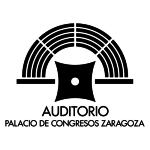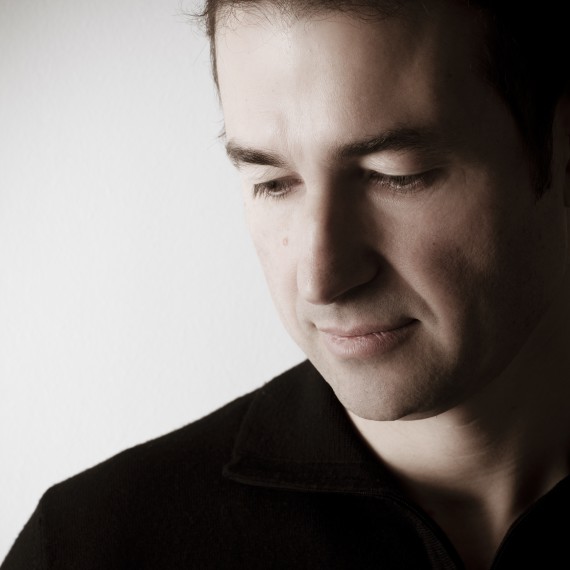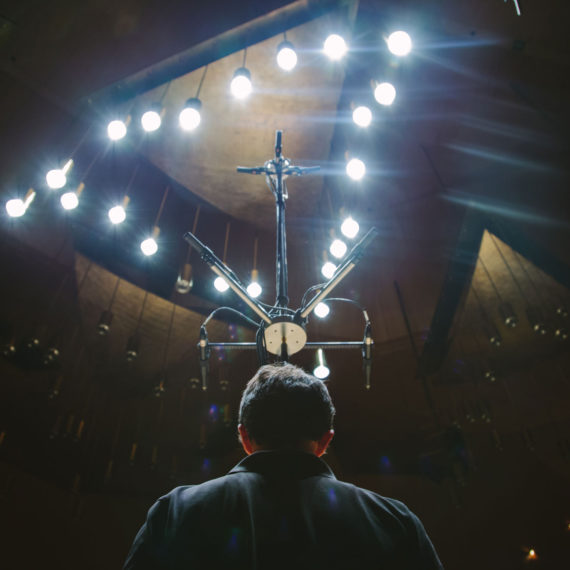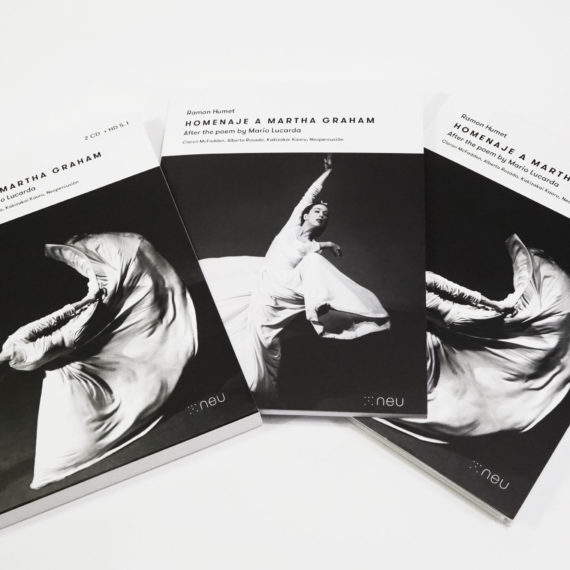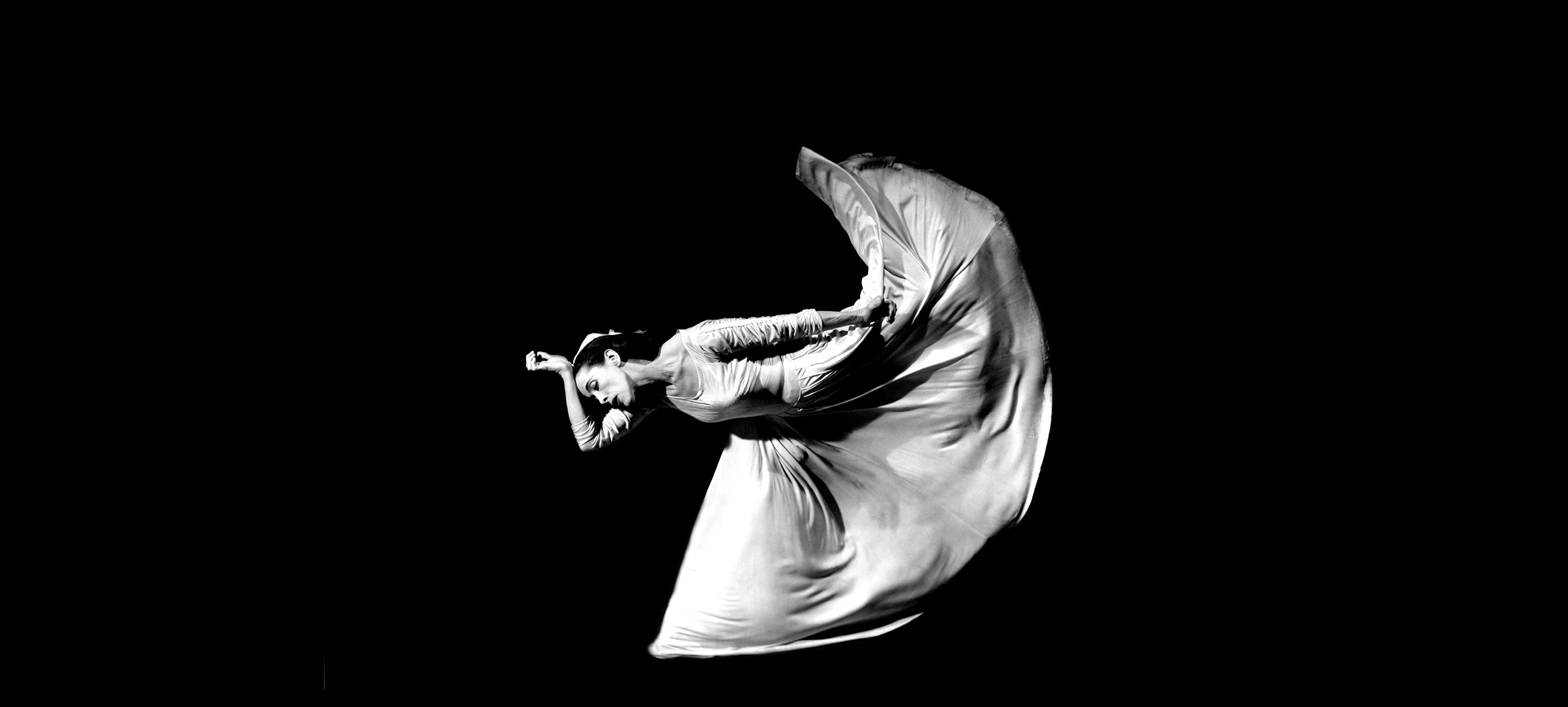
HOMENAJE A MARTHA GRAHAM
AFTER THE POEM BY MARIO LUCARDA
Claron McFadden, Alberto Rosado
Kakizakai Kaoru, Neopercusión
“Humet is a hope for the future, he has a spirit full of light”
Jonathan Harvey
“Exquisitely simple, but endlessly deep”
The Independent
LISTEN
TRACKLIST
Homenaje a Martha Graham |
for one dancer, soprano, piano, shakuhachi and 4 percussionists |
CD 1 |
1. |
Interludi meditatiu I |
04:21 |
||||
2. |
El suelo |
05:14 |
||||
3. |
Interludi meditatiu II |
02:38 |
||||
4. |
Todo cambia, la única verdad |
06:50 |
||||
5. |
Interludi meditatiu III |
03:36 |
||||
6. |
Mover la mano como mano |
02:27 |
||||
7. |
Interludi meditatiu IV |
02:02 |
||||
8. |
No creer en nada |
04:33 |
||||
9. |
Interludi meditatiu V |
03:21 |
||||
10. |
Concentración y relajamiento |
03:55 |
||||
11. |
Interludi meditatiu VI |
03:06 |
CD 2 |
1. |
La cadera y el hombro en relación |
03:32 | |||
2. |
Interludi meditatiu VII |
04:17 | |||
3. |
Identificarse con distintas culturas |
05:57 | |||
4. |
Interludi meditatiu VIII |
02:49 | |||
5. |
No aferrarse nunca a nada |
04:50 | |||
6. |
Interludi meditatiu IX |
04:39 | |||
7. |
En el fondo de los huesos |
07:34 | |||
8. |
Interludi meditatiu X |
06:39 |
BUY ALBUM
2 CD + BOOK
Included formats
2 CD + Book (68 pag.) + Voucher Code to download:
HD FLAC Stereo · 24 bit 96 kHz
HD ALAC Stereo · 24 bit 96 kHz
HD FLAC Surround 5.1 · 24 bit 96 kHz
MP3 · 320 kbps
24,90€
Digital Album in CD Quality
Included formats
FLAC Stereo · 16 bit 44,1 kHz
ALAC Stereo · 16 bit 44,1 kHz
MP3 · 320 kbps
10,00€
Digital Album in HD Quality
Included formats
HD FLAC Stereo · 24 bit 96 kHz
HD ALAC Stereo · 24 bit 96 kHz
HD FLAC Surround 5.1 · 24 bit 96 kHz
MP3 · 320 kbps
14,00€
By Alexandra Gardner
In her 1937 essay, A Platform for the American Dance, choreographer Martha Graham stated that, “A dance reveals the spirit of the country in which it takes root. No sooner does it fail to do this than it loses its integrity and significance.” I believe that this statement also holds true for music, as well as other art forms. However, I also think that a dance (or a musical composition, and maybe even a painting or other work of visual art) reveals the spirit of the creator. As much as Graham’s dancing and choreography was considered distinctly American in style, it was also completely unique to her. Only Martha Graham, with her personal approach to movement and choreographic technique, could have made those dances. Given Graham’s extremely personal artistic interpretation of a culture, it makes perfect sense that composer Ramon Humet was drawn to her as a source of inspiration.
As with Graham’s choreography, Humet’s music displays a sense of gesture focused on contraction and release, thoughtfully balanced from start to finish. Every moment of music is highly focused, and each gesture rendered with sensitivity. The dramatic quality of Humet’s musical language is intense without being heavy or overbearing; in fact much of his music has a playful spirit. In addition, Humet’s music is also highly personal and expresses aspects of his own Catalan culture combined with his long-term passion for Japanese tradition. His sound world reveals the landscape of the region where he lives, as well as the intense yet often soft-spoken nature of the Catalan people, while his musical structures possesses a spare, delicate architecture that evoke images of Japanese gardens. As a large-scale work built from interleaved movements of two separate compositions—the Homenaje a Martha Graham song cycle and Interludis meditatius for shakuhachi and percussion quartet— the piece is a kind of dance in itself. The two compositions flow naturally together, creating a moving meditation full of rich and surprising sonic beauty.
By Stefano Russomanno
Martha Graham disliked the term “modern”. One of the most innovative dancers and coreographers of the twentieth century, she stated in her autobiography “modern dance passes rapidly. That’s why I always say “contemporary dance”, dance of the moment. Perhaps the public call me modern, but I don’t.” That which is modern – to paraphrase Graham – passes quickly because it puts the emphasis on an idealised future, one that is dreamed of; and by this tension it severs its connection with the present moment, which is the only reality. “I’m often asked what I believe the future of dance will be… You never know. My sole passion is to work, to be born in the moment, in the now.” Art and the artist, according to Graham, are not (pre)occupied with the future: their task is, rather, to re-synchronise the individual with the life force that, from the very beginning, has moved human beings. A way of getting back to one’s roots of “discovering and showing the inner landscape, which is the human soul”.
It seems to me that the encounter between Ramon Humet and the figure of Martha Graham, propitiated and mediated by the poems of Mario Lucarda, has a certain air of inevitability. The music of Humet could also be defined as “contemporary but not modern”. There is within it an evident curiosity to investigate all the resources that the current era makes available to a composer, (beginning with the use of non-conventional instrumental techniques, or the incorporation of non-Western sonic options), and yet there is no underlying utopian urge, no desire to “redeem” the present in the music he offers us. It is as if each component of this music were acting from a double perspective, contemporary and simultaneously atavistic, the echo of something that has accompanied us from time immemorial. Listening to the soprano in Homage to Martha Graham I hear, on one hand, a voice forged in Expressionistic language (including sprechgesang) and, on the other, a shamanic voice – within which all kinds of glissandi appear – proffering spells, invective, lament: the very image of natural and supernatural energies.
What most attracts Humet about Graham is the ability of this North American dancer to home in, directly, on to what is essential; the absence of symbolism or prior abstraction. In her vision of what dance is, gesture does not represent a reality beyond its own reality: a hand is a hand, an arm movement is nothing other than an arm movement. Humet’s feeling of affinity with Graham has much to do with the place granted to the intuitive, in the initial phase of the creative act. In the case of the composer, too, the work of formalising comes at a later stage; the work is constructed ‘on the go’, elements balanced progressively, little by little and without a pre-determined plan. It is the very material and its possibilities that guide the work, suggesting and modeling its appearance.
“I only know what piece I want to write when I finish it”, states Humet, and the gestation of Homage to Martha Graham is a good example. When, in 2006, the composer started to write the second of the nine songs, he had no idea that the piece would lead to an organic cycle, finished in 2011. However, that ending didn’t signify the definitive conclusion of the project, because Humet realised subsequently that the songs which comprise Homage were too emotionally charged to be performed one after the other just as they were. Spaces of relaxation needed to be opened up between one piece and another, havens of contemplation which were, at the same time, linked reciprocally to the songs.
Thus emerged the ten Meditative Interludes placed between the nine songs of Homage to Martha Graham in a relation of apparent contrast. The difference between one formation and the other could not be more marked. While the Homage is entrusted to a piano and soprano duo, the Interludes use the Japanese shakuhachi flute and a percussion ensemble – played by four performers – which includes xylophones, marimbas, bongos, crotals, temple block and wood chimes, among others; a universe of timbres with non-European resonances in contrast to the Western instrument par excellence, the piano. The presence of the shakuhachi and the contemplative mood of the Interludes might suggest an intention to evoke traditional Japanese music, and yet the composer’s purpose was to focus the sound material from a double perspective. If Homage to Martha Graham presents us with a perfectly distilled sound world, defined in a crystalline manner by its lines and volumes, the Interludes move between less defined margins, inhabited by signs that are allusive, mysterious, shadowy, incomplete.
Each Interlude develops the musical materials of the preceeding song from a more “rustic” point of view, as it were. For example, the descending figure that impregnates the entire song The ground, and which gives it the obsessive character of a litany, is announced in Interlude I by the xylophone. The soprano’s vocal line with its glissandi, its trills, repeated notes and abrupt jumps are reflected in the shakuhachi parts. Something similar can be observed in the song Never cling to anything, ever, based on an obsessive succession of repeated descending notes which dissolve into silence. The same gesture, (except that in this case the figure is composed of descending thirds instead of semitones), has blossomed previously in Interlude VIII. The silences of Interlude IV prefigure those of the song Believe in nothing. The song In your bones ends on two long notes in which the soprano and the shakuhachi overlap in unison. This juncture, where the flute takes over from the singer and opens Interlude X, shows to what point the shakuhachi acts as an alter ego of the human voice; not in vain, in this last chapter of the cycle, does the flute display its most lyrical facet.
In Homage to Martha Graham, the role of the piano goes far beyond that of simple accompaniment. Sometimes the piano is in dialogue with the voice, at other times it amplifies gestures, at others it pits itself against the voice, as well as having moments of brilliance as a solo instrument, (as in the introduction of Everything changes). The piano responds to the growing vehemence and tension in the vocal part by describing increasingly broad sonic horizons denied to word. The culmination of this process comes with the songs Identify yourself with different cultures and In your bones, in which the keyboard’s virtuosity transmits a blazing, visionary tone, similar to that of Scriabin or Messiaen.
For Martha Graham, vital exuberance was closely connected to the deepest roots of the human spirit, with its spiritual aspect. The musical gesture of Homage to Martha Graham responds to this same idea of outlining a sacred space capable of expressing “the urge to discover the vitality, the curiosity and the amazement that you feel when you really can move” as the American dancer wrote. Graham said “I believe that we reveal ourselves in our every act (whether religious, political or sexual)”. And musical, too, Humet would add.
Stefano Russomanno
Translation by Rebecca Simpson
Homenaje a Martha Graham
Mario Lucarda
I
El suelo,
la madre tierra, el cuerpo inmenso
de la madre tierra, el suelo,
el cuerpo, la conciencia del peso:
la flor, la yerba en el suelo.
El suelo, el centro del movimiento,
el desplazamiento del peso,
la elasticidad animal.
Sobre el suelo el pie; el brazo,
un desplazamiento del peso,
el retorno inevitable, la elasticidad del equilibrio.
II
Todo cambia, la única verdad.
El tiempo invoca los cambios,
no cambiar deliberadamente.
Sólo permanece lo que cambia,
sólo permanecen las vanguardias.
Ave fénix o arpía,
el filo cortante de lo simple,
el filo agudo de lo simple,
el don de ser sencillo.
Única verdad: el cambio.
III
Mover la mano como mano,
objeto de observación y movimiento
inextinguible, articulado, claro.
La mano no es crecimiento del trigo.
La mano no es caída de la lluvia.
La mano como una mano,
el pájaro en tu mano,
en los huesos de tu mano,
potencia vital, tu mano sólo tuya.
IV
No creer en nada,
poner a prueba todo cuanto se hace,
poner a prueba toda verdad,
indagar en lo que todos afirman,
ser hereje: ponerlo todo a prueba.
Y vagar en la duda,
por los laberintos de la duda
con temor, con esperanza,
buscando donde no hay nada,
buscando en el inmenso silencio.
V
Concentración y relajamiento
apoyándose en el suelo, flexionando el pie,
mostrando la energía del esfuerzo,
exhibiendo el esfuerzo
con teatralidad, cara al público
para hacerse con el público,
para no serle indiferente,
enardecerlo,
hacerle sentir la vida.
VI
La cadera y el hombro en relación,
la conciencia de la elasticidad,
de las articulaciones,
de la anatomía,
imponiendo disciplina,
voluntad de hacer, fuerza vital.
Como un instrumento
mostrar el vigor, mostrar la técnica,
la franqueza, la voz convincente,
abandonar la tensión,
mostrar la ciencia, la teatralidad.
Compromiso físico,
impedir la tensión,
situar la técnica, el ritmo de la tierra,
el sol de tu pelvis, en el centro.
VII
Identificarse con distintas culturas,
las almas humanas son iguales,
pertenecen a la misma energía,
una energía que impulsa la tierra,
las leyendas y los mitos
de todas las civilizaciones de la tierra,
las almas humanas son iguales.
Iluminar el paisaje del alma,
atesorar y utilizar el pasado,
reconocer la memoria ancestral.
La santidad de la vida, la continuidad.
VIII
No aferrarse nunca a nada.
Las alfombras de los navajos
quedan sin terminar:
con su pequeña imperfección
dan sentido a la vida.
El precio aterrador de energías vitales,
sereno, cruel, implacable, agotador,
sonriente. Admitir el tiempo,
la propia acción de progresiones
risueña, su eterna sonrisa,
la muerte del tiempo
y el acto del devenir,
la teatral incongruencia.
IX
En el fondo de los huesos
un material que podemos utilizar,
tuétano de pájaros, selva vital,
en el fondo de los huesos,
una potencia vital,
la santidad de la vida, la continuidad.
A cada momento, a cada hora
se oyen detrás los pasos
de lo inevitable,
si de ello somos capaces,
si vencemos el miedo.
La santidad de la vida, la continuidad.
Pecado es no dar en el blanco.
A pesar del ahora
a pesar del inmenso
territorio heredado
afrontas tu destino,
tu único destino personal.
En el fondo de los huesos,
una potencia vital irrepetible,
la santidad de la vida, la continuidad.
(Del libro Voltereta en el aire, 2002)
Nota: Las palabras en cursiva han sido omitidas en la partitura.
“Ramon Humet se mueve en el ámbito de lo contemporáneo de modo ágil, en una vertiente que lo vincula tanto a Olivier Messiaen como a la personal técnica espectralista de Jonathan Harvey, compositores ambos con ojos que miran a Oriente y a la calidad de cada nota musical. A la riqueza técnica de la voz de Claron McFaden y el piano de Alberto Rosado (maravillosa grabación) se alía, por otra parte, la búsqueda de un sentido de lo primigenio en la inefable voz del shakuhachi arropado por una contenida percusión de matices luminosos, cristalinos. No se busca aquí el símbolo sino la raíz. Como dice Lucarda ‘solo permanece lo que cambia’.”
Revista Scherzo / Manuel Luca de Tena
“This lovingly packaged new 2 CD set captures Humet’s shimmering sonic world in demonstration quality sound with the bonus of downloads in HD FLAC Stereo and Surround 5.1. Mario Lucarda’s poem resonates with Zen Buddhist doctrines, and a lineage extends from Martha Graham through her pupil Merce Cunningham to John Cage, whose music embraced change and impermanence. As Mario Lucarda points out, only what changes remains. (…) This outstanding new release Ramón Humet, Mario Lucarda and Neu Records reminds us that the the only truth is change. The classical music industry should take note.” Read more
On An Overgrown Path
“Humet, Lucarda i Graham es mouen en la sang de la creació. Tots tres busquen en el moviment la bellesa i desfan a miques les rígides estructures que la naturalesa corporal ens obliga a dur a sobre, a dins, al costat. L’obra d’Humet està construïda a partir dels moviments intercalats de dues composicions diferents: el cicle de cançons d’Homenaje a Martha Graham i els meditatius interludis per a shakuhachi acompanyats pel quartet de percussió. I sí, interludi a interludi, apareix entre somnis la veu de Claron McFadden, que ve i se’n va; el piano d’Alberto Rosado va creant harmonies per a l’estratosfera emocional; el shakuhachi de Kakizakai Kaoru evoca la tradició japonesa amb una successió de notes evanescents i meditatives; i els quatre percussionistes, generosos en ritme, posen de ben manifest, en un cos a cos, un contrapicat de gestos de tons metal·litzats que van construint unes curvatures on ens podem aixoplugar de les nostres pròpies emocions, perquè el llenguatge d’Humet és dramàtic, intens i molt profund. I és que la seva obra ja és una dansa en si mateixa.” Read more
Sonograma Magazine
“En muy pocos años, el sello independiente Neu Records se ha convertido en uno de los grandes paradigmas de la edición fonográfica de calidad, sentando un modelo de lo que debería ser el espíritu rector de una industria que hoy en día atraviesa por tiempos de zozobra y desconcierto. (…) Neu ha aplicado las técnicas más recientes y sofisticadas a sus grabaciones, en formatos surround o 3D, para los soportes físicos o puramente digitales. (…) En la propia filosofía del sello se contempla la coexistencia de esos dos mundos aparentemente antagónicos o excluyentes entre sí; el vínculo que los une es, simplemente, la excelencia. (…) Y como muestra, el último botón de la factoría Neu, “Homenaje a Martha Graham”, un doble CD con música del compositor Ramon Humet (otra figura emblemática del sello) que pretende ser, como su nombre indica, un tributo a la figura y la obra de la legendaria coreógrafa norteamericana, una de las artistas verdaderamente emblemáticas de la danza del siglo XX. (…) El doble CD, en su formato físico, está editado con la proverbial finura de Neu, e incluye, además del poema de Lucarda, un ensayo del musicólogo Stefano Russomanno.”
Revista Scherzo
“En una època de virtualitat, d’immediatesa, de presses, de plaers efímers, de caducitat i superficialitat, m’arriba una joia per un mitjà tan poc habitual com és el correu postal. Un element tangible, un cofret que conté dos cd’s i un llibret, l‘Homenaje a Martha Graham after the poem by Mario Lucarda editat per l’exquisit segell independent Neu Records . Un element tangible que té cos i ànima, com descobriré aviat, tan bon punt inserti el cd a l’aparell i comencin a sonar les primeres notes. Aleshores és quan el temps s’atura i els sentits desperten a una curiositat primigènia. I em deixo portar per la crida dels ancestres. Em deixo fascinar pel sublim. (…) Connectar en vàries direccions, deixar-se alimentar d’allò existent, fa que sorgeixin creacions d’una extraordinària bellesa com aquesta.” Read more
Week& Barcelona
“Exhibe un sentido del gesto centrado en la contracción y la expansión que mantiene un exquisito equilibrio siendo el propio movimiento la esencia de las energías. Cada instante de música se centra en la sensibilidad, expresividad y técnica sin representar otra realidad más que el gesto en sí mismo.” Disco Recomendado. 5 Stars
Melómano
Composer
Performers
Claron McFadden, soprano
Alberto Rosado, piano
Kakizakai Kaoru, shakuhachi
Neopercusión, percussion quartet
Poem
Photos
Barbara Morgan: “Kick” and “Swirl” (Letter to the World)
Images of dancer Martha Graham from the Barbara and Willard Morgan Photographs and Papers, UCLA Department of Special Collections
Introduction
Alexandra Gardner
Liner notes
Stefano Russomanno
Recorded at
Sala Mozart, Auditorio de Zaragoza
Spain, July 2014
Music Production and Sound
N · Santi Barguñó, Hugo Romano Guimarães
Neu Records executive Production
Design
Scores published by
Tritó Edicions, Barcelona
Graphic art direction
Promoted and Funded by
Marita Gomis Bertrand

